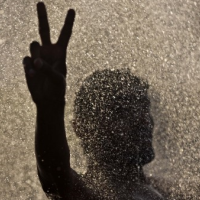Woo-Hoo! Thirsty Californians Beat Expectations and Cut Back Water Use 29%

California is running out of drinking water, draining its aquifers as Year Five of the drought approaches. That’s why California imposed an unprecedented, mandatory 25% statewide reduction in residential water use and started chipping away at growers, who use 80% of the available resources.
So how are we doing?
Officials and the media were mightily impressed, and some near euphoric, on Wednesday when the State Water Resources Control Board announced it had exceeded the residential goal and people had cut back a hefty 29% in May (pdf), although the cuts didn’t formally bite until June.
A 29% cut is an encouraging metric, generating optimism and underlining a shared sense of purpose, which does little to answer the question.
“My first response is almost disbelief,” Mark Gold, of UCLA's Institute of the Environment and Sustainability, told the Los Angeles Times. “These results are beyond encouraging; they’re heartening. They make you realize that as a whole, people in urban areas are making the sacrifices necessary to get through this unprecedented drought.”
But just as the measure of health outcomes—not the growing number of insured—will be the metric Obamacare patients will care most about, thirsty Californians will want to know how the 25% residential goal translates into a more secure water supply.
Are these “the sacrifices necessary?” Or is 29% just a good sign that people are willing to suffer, without questioning the basic premise? That isn’t clear yet.
It’s possible California’s worst drought in at least 1,200 years will end when El Niño arrives. The National Weather Service says there is an 85% chance the weather phenomenon will last through the winter and 90% into the fall. El Niños typically pop up every 2-7 years and mean more precipitation for California. This could be a strong one.
Or not. Unusual is the new normal in today’s world of climate science, and prognostications are more difficult.
Water Board chair Felicia Marcus said in a statement, “We need all Californians to step up—and keep it up—as if we don't know when it will rain and snow again, because we don't.”
There are many known unknowns about climate change in the world and the drought in California. We don’t know what the climate of California is going to be in the foreseeable future and find it increasingly tougher to fool ourselves that we do. Californians can “step up, and keep it up,” but it won’t necessarily be enough if drought persists or revisits the state with increased regularity.
Californians that relied on surface water, largely from Sierra Nevada snowpack runoff, began pumping out groundwater at unsustainable rates early on in the drought. Agricultural interests are cutting back out of necessity, but the industry is not retooling.
California is the country’s largest agricultural state. Number one in nuts, fruit and vegetables. The state grows more than 90% of the nation’s strawberries, broccoli, almonds, grapes and broccoli. Growing almonds takes 10% of the estimated 64 million acre-feet of water used by California each year. But alfalfa hay is worse. Farmers use 15% of the state’s water to grow a thirsty crop that is mostly exported to China, where it is used to feed cows.
There are no plans to revamp that. No official consideration yet of California’s agricultural sector going away and perhaps resurfacing in other parts of the country. Tom Philpott has mused about that question at Mother Jones and the New York Times, and says it’s time to “de-Californify” the nation’s food supply.
The folks he talked to are looking at the Midwest to take our veggies and the South and East to replace now-dethroned King Cotton with fruit, nuts and an order of vegetables.
But Philpott notes that market forces need time to adjust and science has to help accommodate crops in new, wet environments. Laws also have to be rewritten and people have to rethink growing crops in arid California.
That’s a process, one that we are not even getting ready to get ready for.
–Ken Broder
To Learn More:
California Residents Cut Water Use by Hefty 29% in May, Officials Say (by Monte Morin and Matt Stevens, Los Angeles Times)
Making Sense of Water (by Mark Bittman, New York Times)
There's a Place That's Nearly Perfect for Growing Food. It's Not California (by Tom Philpott, Mother Jones)
Agriculture Is 80 Percent of Water Use in California. Why Aren’t Farmers Being Forced to Cut Back? (by Jeff Guo, Washington Post)
State Reduces Water Use by Nearly 29 Percent in Advance of June Conservation Mandates (State Water Resources Control Board) (pdf)
- Top Stories
- Controversies
- Where is the Money Going?
- California and the Nation
- Appointments and Resignations
- Unusual News
- Latest News
- California Forbids U.S. Immigration Agents from Pretending to be Police
- California Lawmakers Urged to Strip “Self-Dealing” Tax Board of Its Duties
- Big Oil’s Grip on California
- Santa Cruz Police See Homeland Security Betrayal in Use of Gang Roundup as Cover for Immigration Raid
- Oil Companies Face Deadline to Stop Polluting California Groundwater





